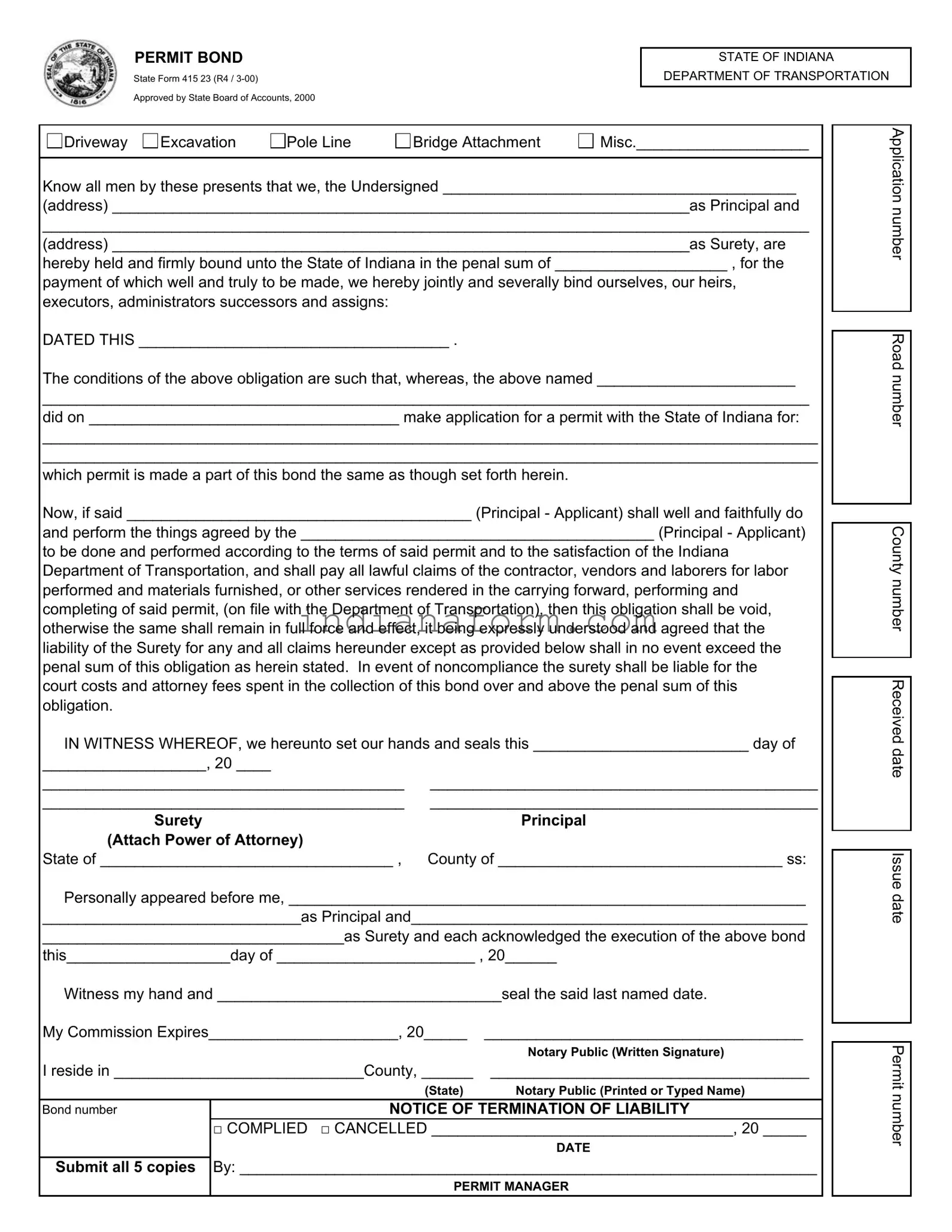Driveway |
Excavation |
Pole Line |
Bridge Attachment |
Misc.____________________ |
Know all men by these presents that we, the Undersigned _________________________________________
(address) ___________________________________________________________________as Principal and
_________________________________________________________________________________________
(address) ___________________________________________________________________as Surety, are
hereby held and firmly bound unto the State of Indiana in the penal sum of ____________________ , for the
payment of which well and truly to be made, we hereby jointly and severally bind ourselves, our heirs, executors, administrators successors and assigns:
DATED THIS ____________________________________ .
The conditions of the above obligation are such that, whereas, the above named _______________________
_________________________________________________________________________________________
did on ____________________________________ make application for a permit with the State of Indiana for:
__________________________________________________________________________________________
__________________________________________________________________________________________
which permit is made a part of this bond the same as though set forth herein.
Now, if said ________________________________________ (Principal - Applicant) shall well and faithfully do
and perform the things agreed by the _________________________________________ (Principal - Applicant)
to be done and performed according to the terms of said permit and to the satisfaction of the Indiana Department of Transportation, and shall pay all lawful claims of the contractor, vendors and laborers for labor performed and materials furnished, or other services rendered in the carrying forward, performing and completing of said permit, (on file with the Department of Transportation), then this obligation shall be void, otherwise the same shall remain in full force and effect, it being expressly understood and agreed that the liability of the Surety for any and all claims hereunder except as provided below shall in no event exceed the penal sum of this obligation as herein stated. In event of noncompliance the surety shall be liable for the court costs and attorney fees spent in the collection of this bond over and above the penal sum of this obligation.
IN WITNESS WHEREOF, we hereunto set our hands and seals this _________________________ day of
___________________, 20 ____ |
|
__________________________________________ |
_____________________________________________ |
__________________________________________ |
_____________________________________________ |
Surety |
Principal |
(Attach Power of Attorney) |
|
State of __________________________________ , |
County of _________________________________ ss: |
Personally appeared before me, ____________________________________________________________
______________________________as Principal and______________________________________________
___________________________________as Surety and each acknowledged the execution of the above bond
this___________________day of _______________________ , 20______
Witness my hand and _________________________________seal the said last named date.
My Commission Expires______________________, 20_____ |
_____________________________________ |
|
|
Notary Public (Written Signature) |
I reside in _____________________________County, ______ |
_____________________________________ |
|
(State) |
Notary Public (Printed or Typed Name) |
Bond number |
NOTICE OF TERMINATION OF LIABILITY |
□COMPLIED □ CANCELLED ___________________________________, 20 _____
DATE
Submit all 5 copies By: ___________________________________________________________________
PERMIT MANAGER

